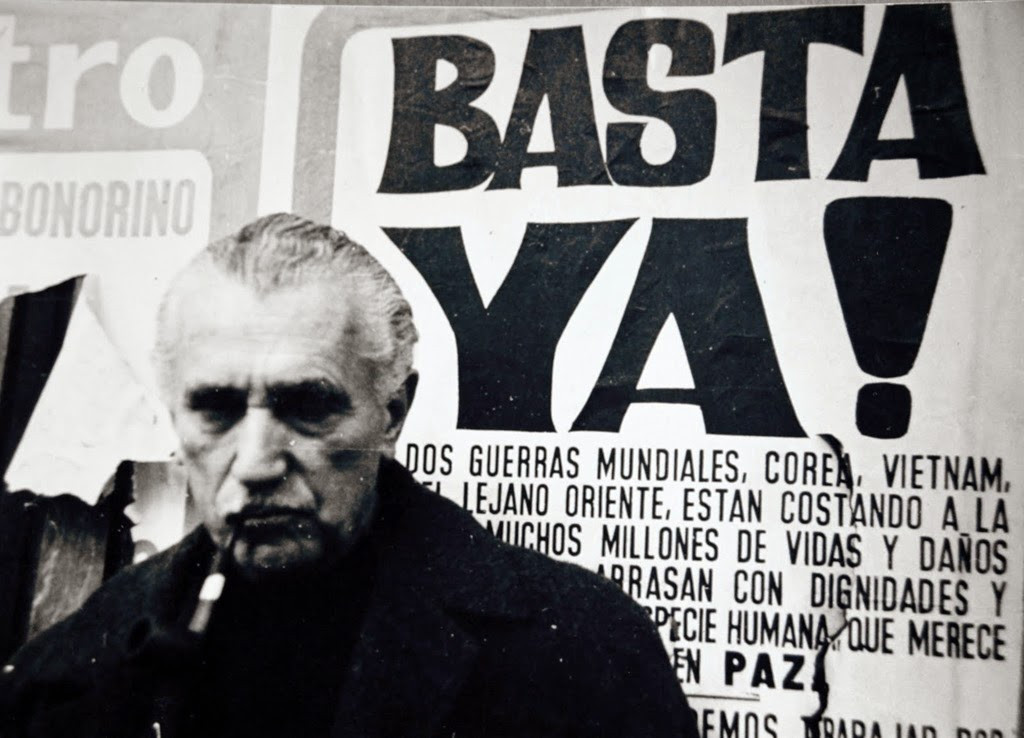
How we communicate or what behaviors we carry out with them or in their presence, among other aspects, greatly affect the type of relationship we have with others.
Taking into account that Interpersonal relationships are an element of great importance in our development and that the human being is a gregarious being by nature, being able to bond emotionally in a correct way that allows normative and relatively continuous contact is essential.
In fact, from birth, being able to establish a bond is important, given that after birth there is an absolute dependence of the baby on the adults in his or her care. This is why the study of the mechanisms used to relate to our peers have been the subject of multiple investigations and generated various theories.
Among them we can find the Pichon-Riviere link theory one of the first psychodynamicists to move from intrapsychic psychology to interpersonal psychology in the field of psychoanalysis.
The link according to Pichon-Riviere
The term “bond” is conceptualized by Pichon-Riviere as the way a person relates to others establishing a relational structure between both communicators that will be unique between the two of them.
This structure marks the way in which the interaction will take place, establishing what communication patterns and what behaviors are acceptable and adaptive in the context of the relationship.
The bond does not refer only to an emotional component but also It incorporates both the emotional sphere and the cognitive and behavioral sphere, all these aspects being modified through interaction. The resulting structure is dynamic and fluid, varying and being affected by the feedback that one’s behavior produces in the other.
The bond is a fundamental element for survival and adaptation to both the social and natural environment, since it allows one to influence the environment while being influenced by it. The existence of links is mainly due to the ability to communicate, through which we establish contact with others and learn based on the consequences of our behaviors on them.

Components
According to the theory of the bond, the bond is bi-corporal, given that on a physical level there are two elements in contact (the subject and the other(s). However, despite being two beings that interact in every link or relationship, there are at least three components that must be taken into account the sending self, the object (considered as such the person or thing with which the connection occurs) and the third, which is understood as the ideal or fantasy constructed by the self about the object and which indicates how we are going to relate to it. he.
When establishing a relationship with an object, the subject maintains two links at the same time, an external one with the object itself and an internal one with the unconscious fantasy that will be projected onto the object and that will mark the existence and the type of communication.
In a healthy bond, according to Pichon-Riviere, The structure that will emerge from the interaction will be spiral type finding the behavior and communication of the subject with a reaction on the part of the object that is going to give feedback to the first so that its behavior can vary.
Likewise, the object will also modify its behavior based on the subject’s performance, the link being a bidirectional relationship in which both elements in communication influence each other in a dynamic way and motivated by psychological needs.
The three D’s
For the author of the link theory, the role or role assumed in the bonding interaction is of great importance When assuming a role, the role that each of the components of the link must have and the fact that they agree on the role given to each one must be taken into account.
In a link we can mainly find the figure of the depositor, who is the one who issues the information or conduct, the depositary or recipient of this and what was deposited, the content transmitted or the action carried out.
Communicate at the link
As we have mentioned, one of the fundamental requirements for establishing a link is the presence of fluid communication between subject and object. Regarding the communicative act, Pichon-Riviere is based on the belief that all communication occurs based on five fundamental principles.
First of all, it stands out that The social affects and structures us from within, forming part of our being We want and need to bond, being affected and affecting the environment at the same time.
A second principle refers to that The behaviors we carry out are determined by what is most internal Our unconscious drives us to act communicatively in order to express our needs, drives and desires.
The third principle implies that every act or even the absence of it is communicative, there cannot be an act that does not transmit anything. Each performance and interaction carried out contains a deep meaning that may be hidden.
Another principle refers to the need for dynamism, openness and mutual adaptation between linked people, showing that the absence of fluidity and the presence of constant perseveration and repetition is synonymous with pathology.
Finally, it indicates that all individuals try to communicate at all times, with all mental activity aimed at establishing communication.
Extracting learning: ECRO
Through communication we extract learning that allows us a more adaptive relationship. The data extracted from the interaction allows us to generate a scheme with which to organize the concepts so that we can adapt to the changes that reality undergoes.
This scheme works with the concepts acquired throughout our lives to work in the context of interaction and produce changes that modify the world. Thus, we will use the schemes formed in order to influence the environment and make links more functional and adaptive
The three areas
In the process of interaction between the components of a link, the subject must establish a relationship between his mind, his body and external reality.
These three areas coexist at all times, although there may be a predominance over one or the other depending on how we carry out certain behaviors. According to Pichon-Riviere, q Whether it predominates or whether it is inhibited will mark the personality of the individual which in turn will greatly affect the bonding capacity and may generate pathological bonds.
The psychological field
When establishing a link, the interaction between the linked elements occurs in a specific context in which the exchange occurs, a context that is called the psychological field. It is about the context in which the subject communicates with the environment.
The author proposes that different data can be extracted from this psychological field through observation that allow working at a clinical level with groups. Mainly, the most relevant information in this regard comes from the behavior expressed by the subject, the bodily changes that allow analyze his emotions and attitudes preverbal communication, lived events or experiences and the contour or set of elements that are in permanent interaction.
A healthy bond
Any relationship in which the Self is capable of using strategies to manage the bad and preserve the good of the relationship, maintaining efficient two-way communication that can be adaptive, will be considered healthy. For this to be the case it is necessary that there be permanent, sincere and direct communication in which the needs of the subject and object are taken into account, in addition to said communication producing learning that allows feedback on one’s own behavior.
Thus, the key components for the existence of a good bond are the presence of correct, efficient two-way communication in which there is feedback and the fact that said communication allows the acquisition of learning.
Pathological links
Not every type of bond is healthy. Although, as we have said, the link generally involves a spiral structure in which feedback on the relationship is given, sometimes this structure she is hindered and paralyzed by fear which by making the third party act as a barrier causes the link to end up becoming something static that prevents it from adapting adequately to the communication reality.
Thus, for the author of the bond theory, there are different ways of relating that constitute a pathological bond when learning does not occur or when dysfunctionalities are found in the communication that means that it is not completely bidirectional and does not produce a correct mutual modification. Communication would cease to be totally permanent, sincere, direct or dialectical.
Some of the main pathological links are the following:
1. Paranoid link
In this type of link, aggressive and distrustful behavior claiming something from each other.
2. Depressive bond
The established link generates or is generated by the presence of fault or need for atonement
3. Manic Bond
Relationship established due to emotional expansiveness It is based on impulsivity and frenetic activity.
4. Schizophrenic link
This link is characterized by a high presence of isolation from reality, considering that autism as a relational absence is a characteristic of this psychopathological link. According to Pichon-Riviere, it is typical of schizophrenia and other psychotic disorders in which the self is detached from reality Groupings of other types of links may appear.
5. Obsessive bond
The relationship typical of an obsessive bond assumes that at least one of the linked individuals aims to maintain control and order in the relationship The attempt is made to control and monitor the other due to the anxiety produced by mistrust.
6. Hypochondriacal bond
The way of relating to the environment becomes the complaint due to the state of health or concern for the body.
7. Hysterical bond
This type of bond is based on representation, wanting the psyche of one of the components of the bond to want to express something through acting or symptomatology. So, there is great drama and plasticity The type of expression can range from physical symptoms (convulsions, screams, etc.) typical of conversion hysteria or through fears derived from distrust.
8. Night Bond
Typical of subjects with states of altered consciousness, in this type of connection a subject tries to establish a relationship with an object but is hindered by sleep If you manage to establish it, it usually has delusional overtones.
9. Homosexual bond
Pichon-Riviere started from a traditional conception of psychoanalysis that He saw homosexual relationships as a perversion For the author, the objective of the homosexual bond was to establish a relationship with an object that at some point is considered harmful or persecuting, trying to conquer said object through strategies of control and appeasement.
Currently the idea that homosexuality belongs to the realm of mental disorders is completely refuted.
10. Epileptic bond
Bonds of this type, which according to this approach are especially found in epileptic patients, imply the presence of tenacity, viscosity in the relationship and a certain component of destructiveness
11. Backward link
The regressive link arises at the moment when the sameness, the achievement of the complete self or the totality of the being, is denied or clouded For this author, this type of bond is a type of psychotic episode, and in conditions in which there is depersonalization.
Importance of this theory
Beyond its impact when studying and analyzing the importance of bonds and their deformation in pathological processes, the importance of bond theory is such that it would set a precedent in the emergence of social psychology.
It must be taken into account that at the time when this theory emerged, psychoanalytic psychology was mainly focused on the internal conflicts of each person, making little reference to environmental factors and to the relational mechanisms between people.
With this theory Pichon-Riviere would open the door to the systematized study of human relationships and its organization from psychoanalysis, serving its studies to improve the situation of multiple patients through the treatment of their communications, in an area previously little worked on previously.








